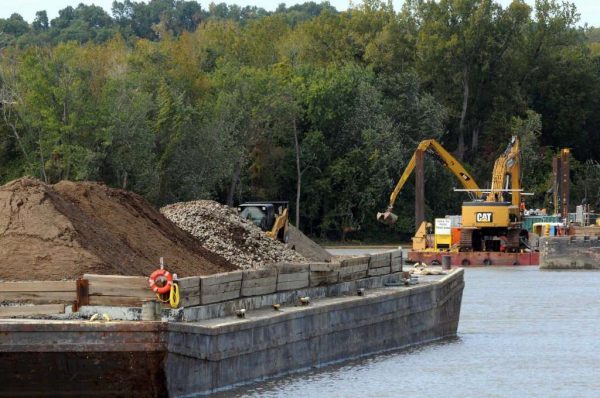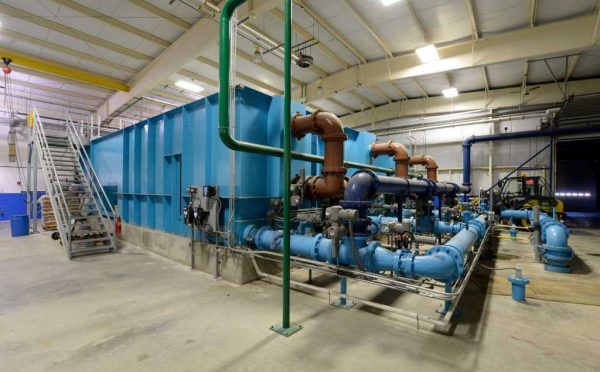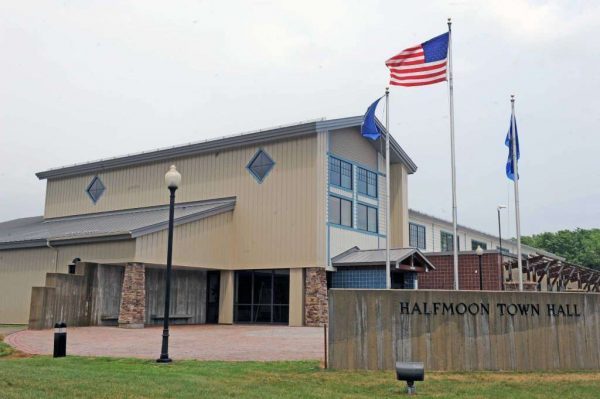General Electric Co. has agreed to pay Halfmoon $5.6 million to resolve a federal lawsuit the town filed seven years ago seeking reimbursement for the costs of finding an alternate water supply as a result of the company’s PCB dredging project in the upper Hudson River.
The settlement, if approved by the Halfmoon Town Board next week, ends a lawsuit filed in 2009 by the Saratoga County Water Authority and several river communities that claimed their water supplies were tainted by the company’s federally mandated dredging project. The county water authority and three other plaintiffs in the case — the village of Waterford and the towns Stillwater and Waterford — previously settled their cases with GE.
Halfmoon’s tentative deal with GE would not require the town to repay the U.S. Environmental Protection Agency more than $3 million that the federal agency spent on a water line that helped supply the two communities with water from the city of Troy. That portion of the deal is still being worked out, officials said.
The federal lawsuit, was scheduled to go to trial in U.S. District Court in two months. Pre-trial discovery in the case resulted in the unprecedented release of thousands of pages of internal GE documents on PCBs dating back decades. The litigation also subjected several of GE’s top executives, including former CEO Jack Welch, to sworn depositions about their knowledge of the company’s handling of PCBs at its former capacitor plants in Fort Edward and Hudson Falls.
“A settlement at this time made sense,” said Mark Behan, a spokesman for GE.
GE completed the dredging portion of its river cleanup project last year but is continuing to monitor PCB levels in the Hudson River. The company is also in discussions with the EPA about possibly dredging PCBs from low-lying flood plains along the river. In the federal lawsuit with the river communities, GE argued that the dredging posed “no significant health risks” even when spikes in the PCB levels occasionally exceeded safe drinking water standards.
Halfmoon’s pending settlement with GE comes as the town is negotiating a 20-year contract to continue receiving water from the city of Troy’s Tomhannock Reservoir.
The deal with Troy signals that Halfmoon may never return to using water from the Hudson River, even though in 2003 the town opened a $12 million water plant on the river.
Halfmoon Supervisor Kevin Tollisen said the safety of residents and the inability to predict future spikes in PCBs prompted town officials to seek alternate water supplies.
“The water in the town of Halfmoon is a top priority issue and because of the PCBs and the Hudson River, and my position as supervisor, I’m not putting the town residents back on Hudson River water while I don’t have assurances or scientific evidence that the water is safe to drink,” Tollisen said. “I’m not going to put them in harm’s way.”
The town’s water plant near the Hudson River was built at a time when the U.S. Environmental Protection Agency was fighting to compel GE to dredge PCBs from the upper Hudson River. Town officials have previously said the project was not a lost investment because the water plant is used to chlorinate and filter the water the town receives from Troy.
Still, the use of Troy’s water has not been seamless for Halfmoon and Waterford. In January, the communities endured a multiday water crisis when an antiquated 33-inch main in the city of Troy ruptured, causing the neighboring communities to lose water pressure for days as residents and businesses were instructed to ration their water use. The communities shut down businesses that were heavy water users and distributed bottled water to residents.
In the wake of the crisis, Halfmoon and Waterford also pursued getting a second water source from the Saratoga County Water Authority, which is proposing a project to connect the two communities with a major water supply line in Stillwater.
Waterford Supervisor John E. Lawler said the towns would use the water authority’s supply to augment their systems. The project would also spin off a water line that would help supply the city of Mechanicville, he said.
“Our systems are very interconnected,” said Lawler, who chairs the county water authority. “We, being Waterford and Halfmoon, would then use the county as an additional source of water.”
The river communities, which all reached multimillion-dollar settlements with GE, were time-barred from suing the company for its decades-long pollution of the river, which is listed as the nation’s largest hazardous-waste Superfund site. Last month, Saratoga County agreed to accept a $5.3 million settlement offer from GE in the same case.
The dredging project removed more than 1 million pounds of PCBs from the river, but left communities with water plants downstream from the dredging project uncertain about the safety of their water.
Initially, Halfmoon continued drawing water from the Hudson River during the dredging project, but shut the plant down repeatedly due to spikes in PCB levels. In March 2010, when there was no dredging, PCB levels in the upper Hudson River still jumped to 2,000 parts per trillion, in excess of safe drinking water regulations, prompting Halfmoon to permanently shut down its plant. It has not used water from the Hudson River since.
Saratoga County officials claimed they spent millions of dollars in additional funds to build a water plant in Moreau, north of GE’s former capacitor plants in Hudson Falls and Fort Edward, where PCBs were flushed into the river between 1947 and 1977. PCBs are considered hazardous waste and a suspected carcinogen.
GE opened its Fort Edward manufacturing plant in 1946 and its Hudson Falls plant, a mile up the river, in 1951. Court records indicate GE purchased an estimated 190 million pounds of PCBs over a period of decades, using it as a dielectric fluid to insulate its capacitors from overheating. PCBs, a coal-tar byproduct, were for many years the government’s preferred chemical for that purpose. PCBs were banned by the U.S. Environmental Protection Agency in 1979.
[email protected] • 518-454-5547 • @brendan_lyonstu
Source: www.timesunion.com








Be the first to comment on "Final Lawsuit Over GE’s Hudson River PCB Pollution Nearly Settled"